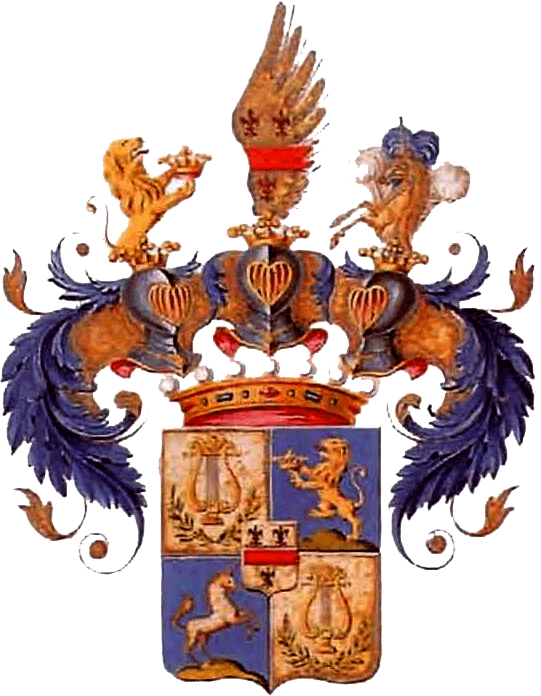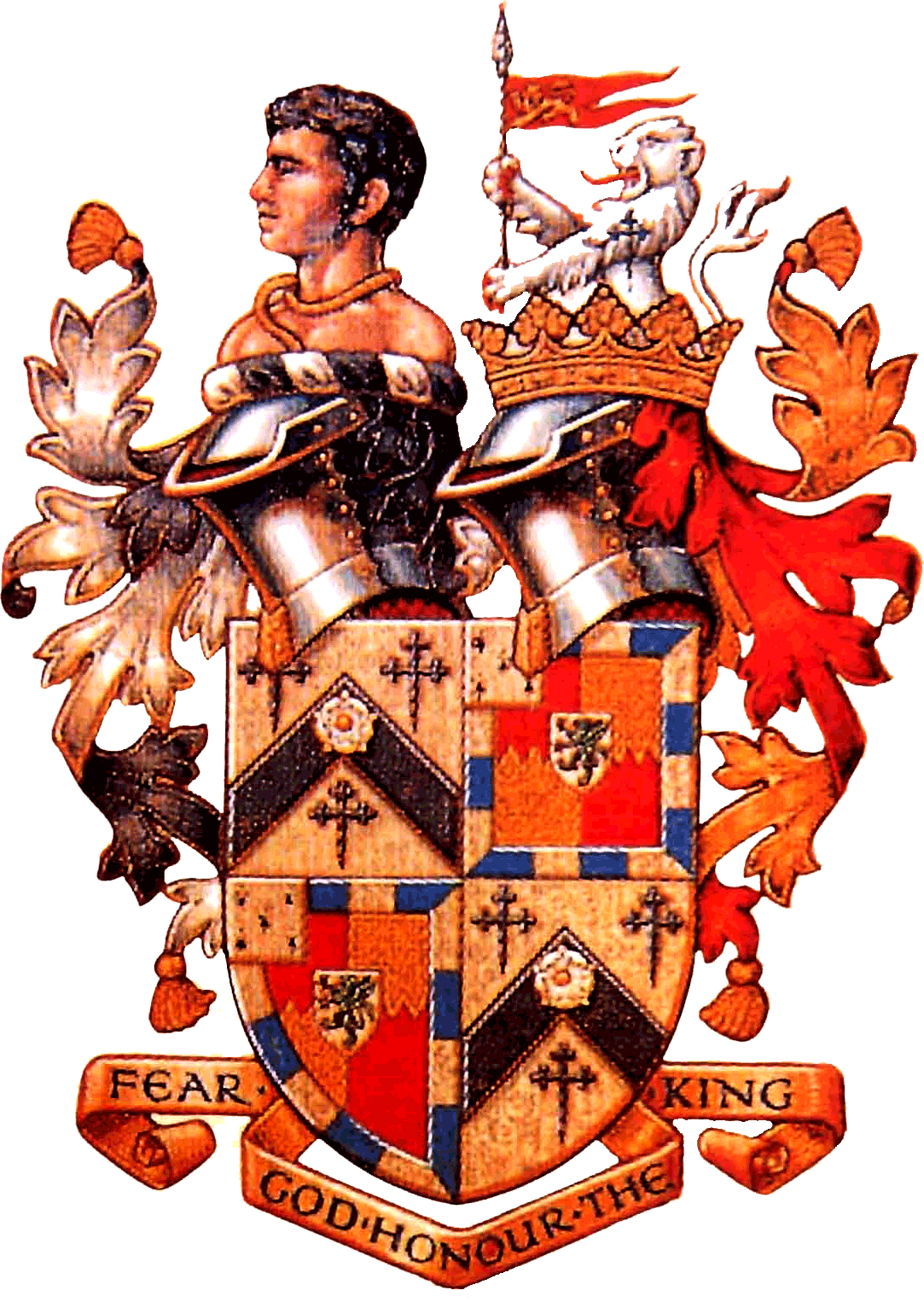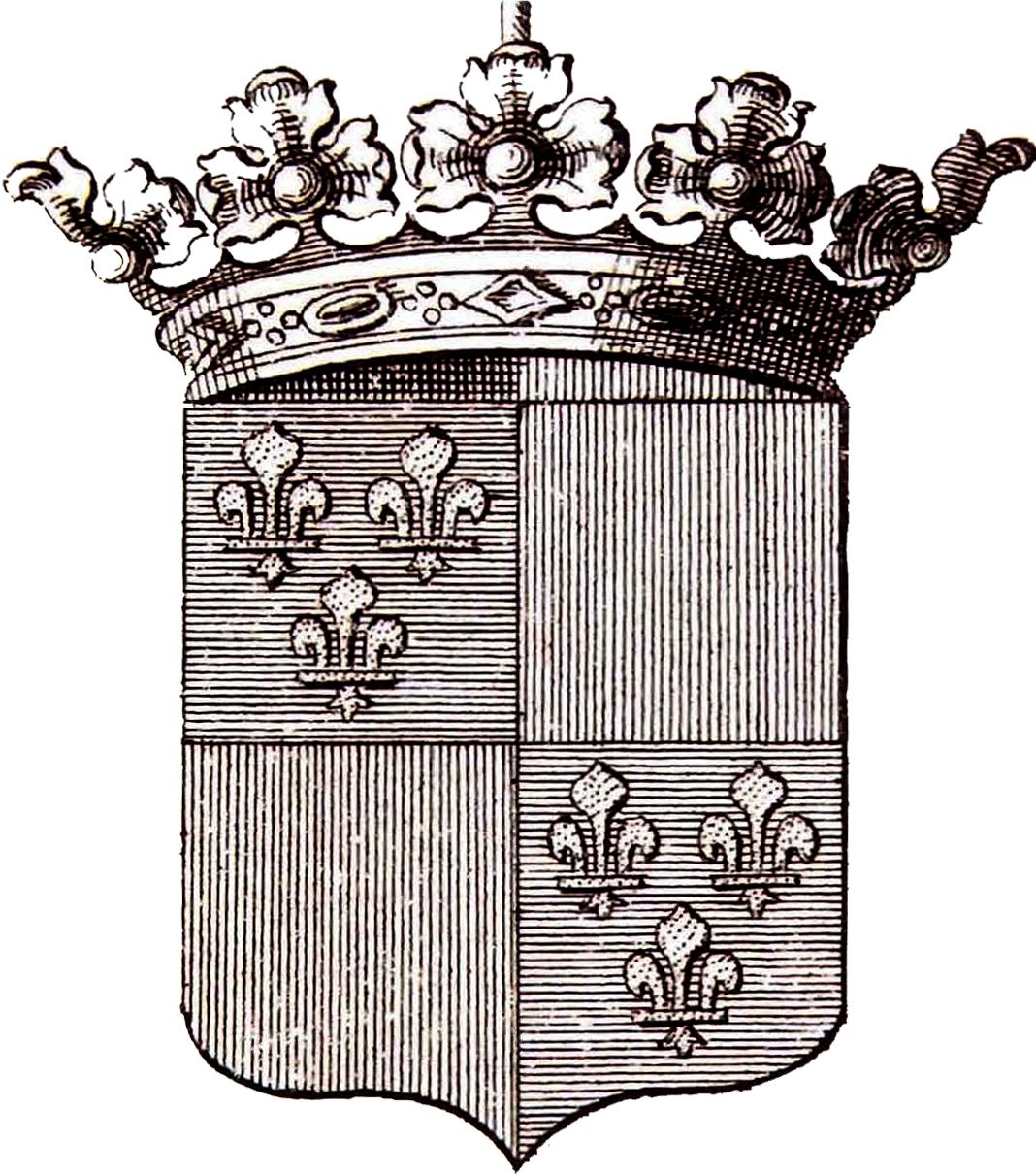
|
Many people are baffled by the language used by heraldists in the English-speaking world. In many countries it relies heavily on Norman French, the language of William the Conqueror, which was spoken by the nobility in much of Europe during the period when heraldry was evolving. In other nations, such of Germany, heraldic language is much nearer to modern-day usage. At a tournament, it was the duty of the medieval herald to call out the names, titles, genealogy and arms of the participating knights, accompanied by a flourish of trumpets, and the word thus also came to mean a public proclamation.
To begin the blazoning or description in heraldic terms, of any shield of arms, it is necessary to deal with color, since the very first word used in the description refers to the color of the background or field of the shield. There are five main colors in heraldry: red, blue, black, green and purple. Some mixed colors, known as stains, are also sometimes used. The two metals – gold and black – are usually depicted as yellow and black. In British heraldry Norman French names are used for colors and metals, though gold and black are also sometimes used in blazonry instead of “Or” and “Argent”.
In addition to the colors and metals, heraldry makes use of “Furs” – patterns that suggest the costly furs worn by the medieval nobility. The two main furs are “ermine” and “vair”, and each has several derivatives. Fur, just like a colored field, can have any variety of charges placed upon it, and can take the place of either metal or color. When the shield is divided into various simple divisions or blocks, this is signaled by the words “party per”, (divided by) or more simply “per” followed by the particular nature of the division, such as “party per pale” (divided in half vertically). The descriptions of the division utilize the names given to the corresponding “ordinaries” – the fundamental geometric charges. Where the shield is parted in an even number of small divisions the number of divisions is then specified, such as “bendy of six”, “paly of eight”, “barry of ten”. Any parted field can bear another charge of charges of either a metal or a color, without breaking the metal-on-metal, color-on-color rules.  The most simple charges or devices, found on the heraldic shield are geometric patterns called the ordinaries. These charges have long been considered to hold a special place in heraldry, hence the appellation “honorable”. The ordinary normally occupies about one-third of the area of the shield, and can be borne alone or in conjunction with other charges. It can also itself bear further charges. In blazonry, the ordinary is always mentioned directly after the field. Some of the ordinaries, such as the bands, can also be borne is smaller forms in pairs or more. These diminutive ordinaries have names that reflect their nature, so that chevrons give rise to chevronels, pales to pallets and two or more bends are described as bendlets. Any ordinary can be “voided” by having its centre removed to reveal the field or another tincture; it can also be “fimbriated” edged with a narrow band of another tincture. |
Heraldry Introduction | The Origin of Heraldry | The Law of Arms | the Coat of Arms | The Language of Heraldry | Color of Shield & Meaning | Symbolic Meaning
Home Disclaimer Contact Us

